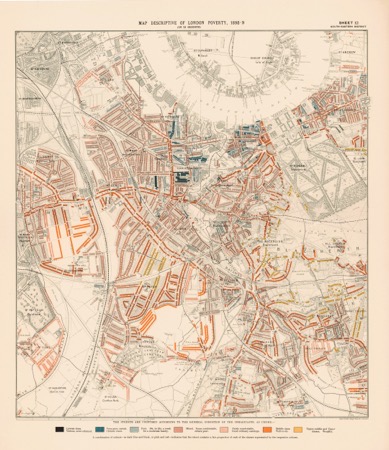Menu

 In yesterday’s post, I reminded readers of three critical aspects of a complex adaptive system: (i) it is necessary, but not sufficient, for there to be many elements; (ii) rich, short-range interactions between those elements are necessary and probably sufficient; (iii) the elements are not aware of the whole, necessary but not sufficient. That isn’t an especially novel definition. You will find it in various forms in most textbooks on the subject. I’ve used the specific language of Cilliers in Complexity and Post-modernism, but I could have used more or less any reputable source.
In yesterday’s post, I reminded readers of three critical aspects of a complex adaptive system: (i) it is necessary, but not sufficient, for there to be many elements; (ii) rich, short-range interactions between those elements are necessary and probably sufficient; (iii) the elements are not aware of the whole, necessary but not sufficient. That isn’t an especially novel definition. You will find it in various forms in most textbooks on the subject. I’ve used the specific language of Cilliers in Complexity and Post-modernism, but I could have used more or less any reputable source.
In that post and elsewhere I have also emphasised that human systems have added layers of complexity to that seen in a termites nest. It is that added layer that resulted in my developing and naming the field of anthro-complexity to contrast with computational complexity. In 2020, my Christmas blog series on Naturalising Sense-making contained three posts on this subject, and the first included Cilliers’s complete set of characteristics along with key terms from Axelrod & Cohen. In yesterday’s post, I argued that understanding complexity in human systems requires a complex integration of multiple academic disciplines and that integration, contributing to that task, has been a large part of my life for the last two decades. I also referenced my recent social media post, where I suggested that complex theory should be able to give rise to simple practice, and this second post elaborates on that.
I also summarised three heuristics for managing complexity, and in this post, I will be expanding on the first of those, namely, Optimising the granularity. At some stage in the not-too-distant future, I will expand on the others and/or rework them in a new form. I am still thinking about that, but I haven’t entirely made up my mind yet, so for the moment, I’m sharing where I am in this post to get some intelligent feedback (other types of feedback will also be read). The three things I want to look at are granularity, abstraction and coherence, and you will see evidence of my applying those principles in both Estuarine and Knowledge mapping.
To be clear, this is less a recipe and more a mixture of ingredients and principles that a reasonably skilled chef could use. As with all my methods, they are open source, but this is one set for which I would recommend mentoring.
Over recent years I have frequently made the point that the only way to scale a complex system is by decomposition to the lowest level of coherent granularity (LCCG) and then allowing recombination; not repetition or aggregation. In effect, what I am seeking to do here is (i) increase the number of elements in play and (ii) break down stable connections that prevent new patterns from emerging. Remember that if the properties of the whole cannot be deduced from the properties of the parts, aggregation and repetition will produce more of the same, becoming increasingly unproductive as the context shifts. Combining and recombining more minor things through multiple rich interactions should produce a more effective and resilient solution to shifting contexts, especially if we focus more on understanding the elements and defining the interactions.
That should remind people of object-orientated design, and that underpins our Hexi approach, which decomposes methods and tools to their lowest coherent elements and then allows for novel patterns to form as they reconnect. I should repeat an earlier apology here: the runaway success of the early launch and the interest from third parties exceeded our capacity to deliver, and we have been gearing up our supply chains, so the new packs should be released for sale in a few weeks.
That is a design approach to granularity in workshops. The approach tends to be as follows:
Now, we are working more on the design approach and automation. Still, overall, you start any programme with things that can combine in novel ways rather than with objectives or existing structures or assumptions.
I’ve written much on this over the years, including the role of artistry and imagination in my most recent Christmas blog series, abstraction and codification in the context of knowledge management and on multiple occasions in the context of exaptation and innovation, of which this is one example. To be clear, I do not mean Hayakawa’s ladder of abstraction, which is a little too linear and categorisation focuses for my liking, but it can be included. In those various posts over time *and there are a lot of them) there are three main themes:
All of these, in various ways, reduce the distance between elements and/or allow rapid absorption of a complex mass of what would otherwise be unintelligible information. Notably, the most effective is not encompassed in words other than in poetry. By shifting up a level of abstraction, we allow things to combine in novel and different ways, which is key to active sense-making.
When we capture the data in SenseMaker®, we can build abstraction into the signification and then use data analytics to present it to decision-makers in novel and exciting ways. In a workshop, one can use metaphor-based typologies and graphic recording, singing history, and so on, which can all serve well. It is, however, essential to realise that these art uses are tools, not the event’s objective. Something often missed by practitioners. Our various forms of aporia also achieve this. All of these work indirectly to break entraining patterns of thinking and representation so that novelty can emerge.
So I can dial down the granularity and dial up the abstraction, and the novelty of combination and recombination will increase. I could have stopped there, but then I would have missed two things. Firstly, the need to make sure that what emerges is coherent, and secondly, the simple fact that for a system to be complex, the elements must not be aware of the whole. In humans, that is critical, and I wouldn’t recommend the idea that you need to think holistically. For a start, you can’t; there is too much information. But more importantly, if we think about the whole, we start to make decisions on what we think should be the case, or instead, what we think we should think should be the case, and all that is just a recipe for creating the platitudes that are the expected outcome of workshops with that as a starting point. Rather than thinking about where we might like to be, we should focus on changing things at a micro level so that the evolutionary pathways or affordances in the system shift and what is a sustainable and coherent solution becomes evident to previously conflicting parties.
I need to write more on this last point, but I will leave it there now.
The banner picture is cropped from an original by Pawel Czerwinski, as was yesterday, and we have another map of London Poverty 1998-9 from the fascinating LSE Library, both on Unsplash.
Cognitive Edge Ltd. & Cognitive Edge Pte. trading as The Cynefin Company and The Cynefin Centre.
© COPYRIGHT 2024

Over the last month or so, I have been emphasising the need for lots of ...
This past week saw me head up to the University of Hull to give the ...